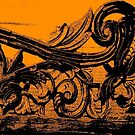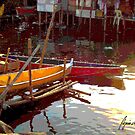
The Heritage Conservation Society featured Prof. Tim Long, landscape and architectural photographer for the Frank Lloyd Wright Trust and Chicago Historical Foundation in its 3rd Architectural Conservation Lecture Series on Architectural Photography, June 21, 2008, Museo ng Maynila (Army and Navy Club Building), Manila.
Prof. Tim Long shared insights on the documentary project: “Daniel Burnham’s Enduring Vision for the Philippines: Creating a Photographic Document.” He noted that although Burnham’s vision for the Philippines was “never fully realized, it did exert a powerful influence for decades on building design, street schemes, and zoning codes in various regional capitals.”
According to Long, Manila, despite becoming so dense with building and people, still has the markings of Burnham’s influence – “buildings clustered around Rizal Park and with field houses built for officers’ clubs and the Manila Hotel at the opposite end near the Manila Bay.”
Long also cited Baguio, as another city where Burnham’s influence is clearly manifested. Named after the designer, Burnham Park is situated in a central area with government buildings put up along a central axis of the park. The layout is even reminiscent of the older section of the Chicago Park District.
With the important facets of the Burnham Photography Project imparted to architecture and photography students and other enthusiasts, it is hoped that the project makes an important addition to Burnham’s contribution to architecture and city planning. Burnham, a Chicago architect, gained greater reputation as a city planner. He supervised the lay out and construction of the 1893 World's Columbian Exposition. In 1909, he also led the drafting of The Plan for Chicago, considered as the first example of a comprehensive planning document in the U.S.A. Burnham also worked on other city plans, including ones for Cleveland, San Francisco, Washington, D.C. and Manila.
Prof. Long, having a 25-year experience in photography, also gave notes on taking accurate and compelling photos of architecture. He simply zeroed in on perspective or angles- slowing down as one carefully studies the ideal angle for the shoot instead of experimenting on snapshots, learning how to crop, being responsible for every part and corner of the subject, and knowing the value of the structure. Long also emphasized the projection of the subject or landmark as how they are useful to people.
Long, who also teaches photography at Columbia College, is the director of the Portfolio Center. He is currently working on two book projects with the Center for American Places.



















No comments:
Post a Comment